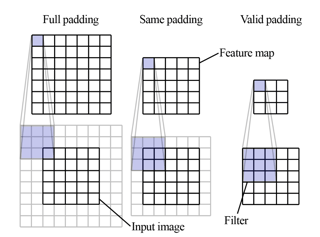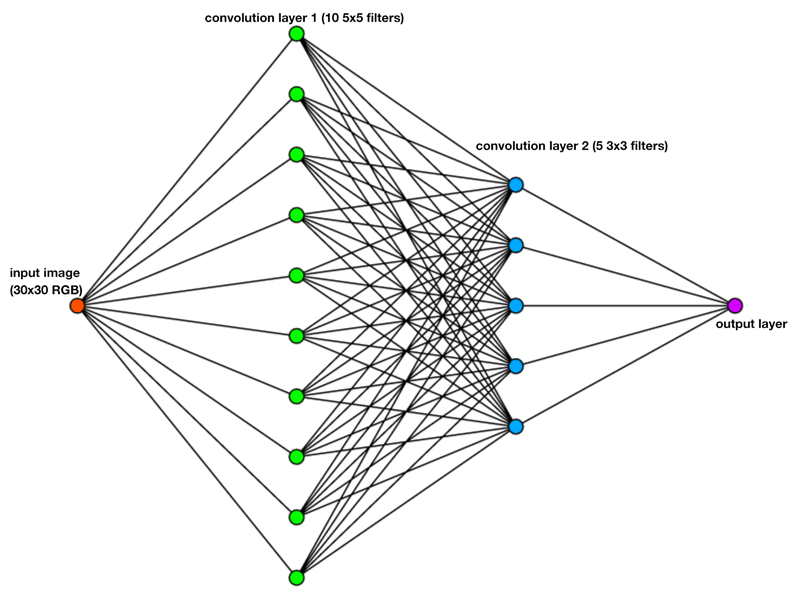For a 3 channel image (RGB), each filter in a convolutional layer computes a feature map which is essentially a single channel image. Typically, 2D convolutional filters are used for multichannel images. This can be a single filter applied to each layer or a seperate filter per layer. These filters are looking for features which are independent of the color, i.e. edges (if you are looking for color there are far easier ways than CNNs). The filter is applied to each channel and the results are combined into a single output, the feature map. Since all channels are used by the filter to compute a single feature map, the number of channels in the input does not affect the structure of the network beyond the first layer. The size of a feature map is determined by the filter size, stride, padding and dilation(not commonly used - see here if you are interested.).
In your example, a 30 x 30 x 3 input convolved with 10 5 x 5 filters will yield a volume of 30 x 30 x 10 if the filters have a stride of 1 and same padding (or, 26 x 26 x 10 with valid padding / 34 x 34 x 10 with full padding).
Same padding buffers the edge of the input with filter_size/2 (integer division) to yield an output of equal size (assuming stride is 1) while valid padding would result in a smaller output. Valid padding doesn't crop the image as you said, it's more of a dilution of the signal at the edges, however the results is essentially the same. Note that even with same padding the edge pixels are used in fewer convolutions - a 5 x 5 filter with same padding will use a central pixel 25 times (every position on the filter) but only 9 times for a corner pixel. To use all pixels evenly full padding must be used which buffers the edge of the input with filter_size - 1.

Each feature map becomes a channel in the output volume. Therefore, the number of channels in the output volume is always equal to the number of filters in the convolutional layer. So, the second layer would output a volume of size 30 x 30 x 5 (stride 1, same padding).
The last layer in your example (fully connected) multiplies the value of each pixel in each feature map by a learned weight and sums the result. If the network is a binary classifier, the summed value results in a 1 or 0 output if a threshold is reached or as a decimal value for a regression model. This is determined by the FC neurons' activation function.
If visualizing this helps you as much as it helps me, I highly recommend having a look at the interactive examples here. Note that what is shown by this tool is the signal propagating through the network, i.e. the output from each layer, not the filters/weights themselves.
If you are interested in a bit more depth about ANNs and convolutional layers, I cover all the basics in my thesis(this is where the image is from) - p.9-16 ANNs & p.16-23 CNNs.


